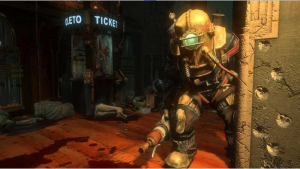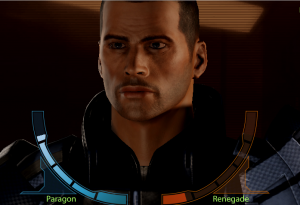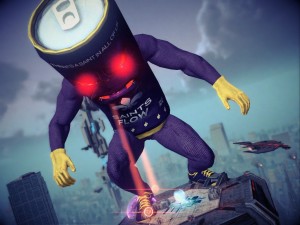While the concept of the anti-hero comes up in many stories in various mediums, one of the hardest plots to get right is telling a story from the villain’s perspective. Very few do this, and even less get it right; such as the difference between Breaking Bad and Dexter. For today’s post, we’re going to turn to storytelling to talk about why this is so hard in any medium.
Reverse Antagonist:
Let’s start with briefly defining what we’re talking about. This is not the case of writing the story from the point of view of an anti-hero like The Punisher, or aggressive characters like Batman, but doing a story from the villain’s point of view.
While this may be simple from the outside, there are several big differences when writing for the villain. You cannot approach writing the villain as you would the hero, because then you’re just writing a story from an anti-hero’s perspective.
The first big difference is the audience’s investment in the character. Traditionally, people read stories about heroes because they want to project some part of them into the character; this is why so many kids grew up loving Superman. With a villain, you’re not supposed to relate to the villain, but at the same time you can’t make them un-relatable. The audience needs to have something to hook them as to why they should be watching this character do bad things.
In Dexter, it was watching him deal with “the dark passenger” and avoiding getting caught, or Walter White in Breaking Bad and his descent into becoming a drug kingpin.
Another big difference is the use of side characters. Rarely in stories built around villains do side characters work to flesh out the story. The reason is that the villain is so much the driving force of the story that it’s hard to really care about the other characters when it doesn’t reference them. When I was watching Dexter, it got to the point where I just fast-forwarded through any side story that didn’t involve Dexter.
This is why Breaking Bad worked a lot better, because the side stories were either resolved quickly, or they somehow involved Walter and became part of his story. The villain is usually so compelling that we don’t need/want other characters distracting us from what they’re doing.
A good story and writer is able to make the fact that we’re watching the villain work their way around the good guys and still be able to root for them. Of course this requires a careful balance between how far you go with your characters, and sometimes you can alienate your audience if you go too far.
Case in point, a major act that Walter did midway through the series (don’t want to go too far for spoiler’s sake.)
But in the same breath, there is the problem of not going far enough. In the series Overlord, the game tells us that we’re controlling a bad guy who wants to rule the world, but we’re more an anti-hero who is fighting against another bad guy. And that right there is another challenge of writing a villain’s story: What’s the motivation?
An Evil Motive:
The motivation of a villain is one of the hardest and oftentimes failed parts when writing a story for them, and we’ve seen this many times in video game writing. Bioware is very guilty of this point with their good/evil choices. Being evil simply means that the player is doing the same exact thing as the good guys, but you’re more of a prick. The only times we actually see the impact of the player’s actions is through cutscenes and not through interaction.
A game that got really close to having the player be evil both through cutscenes and interaction would be Saint’s Row 2. While the series was making that transition between serious and comedy, the second game went very dark in terms of the main character’s solution to the enemy gangs: From kidnapping, destruction, brutal deaths and more. Despite the more comedic side of the Saint’s Row series, this even took me aback.
What stops it from truly being considered a villain’s story was that the game never really called the player (or the main character) for these actions; there were no consequences to their ability to play the game and only one character in the universe really comments on it.
The player’s/main character’s actions were viewed through the lens of: Doing a bad thing against bad people for the right reasons.
It would have been really interesting to see where the developers would have gone with a more serious tone given the actions of the main character, but of course things changed with Saint’s Row the Third.
If all I’m doing is fighting bad guys who are controlling the world, how is that any different than if I was a good guy?
You can argue that you’re doing it for the wrong reasons, but none of that is directly related to the player’s actions or gameplay, only by cutscenes. And if we’re talking about that, we can bring up the utter failure of Bioshock’s choices and how you turn from greatest man alive to Hitler if you sacrifice one little sister no matter what the player did elsewhere.
The problem is that developers either can’t or don’t want to write a story where the character goes downhill. Someone was telling me that a poll was done and most players will go for the good ending instead of the bad one. I’m the opposite, I tend to go bad first just to see how far the designers decided to go with evil.
A good example of this came from a strange source: Spiderman Web of Shadows. The game allowed players to embrace the venom side of Spiderman which affected the story, ending and what characters sided with him. If you go full on evil, you get a different ending when everyone decides to team up to fight Spiderman. In this case, there was both a narrative and gameplay-related difference between good and evil, where most games will usually commit to one or the other.
Spiderman’s ending takes us to the final point for this piece and the hardest element of writing villain stories: The ending.
A Bad End:
When you’re writing the story for a hero, you can end it in all sorts of ways: The hero wins, the hero wins but with a lost, the story continues and so on. However, a villain requires something else and is not always easy.
Very rarely will the ending “The villain kills everyone and rules the world,” will work. The other option is to make them lose, but that can also be seen as a cop out as well. It’s just as hokey to end with, “The villain at the last moment is defeated, because everyone teamed up with the power of friendship to win.”

Bioshock was one of many games that went with a black and white ending, which ultimately made the concept of choice meaningless
But there’s even a third problem, when the villain wins too well and what we saw in Dexter. The problem with Dexter was that the writers wrote themselves into a corner with the character, making him essentially too good at what he does.
No matter what happened to Dexter, he always managed to get out of it and the series even ended with him escaping with little consequence directly to him. When the villain is basically unstoppable, you then run into the problem that there are no stakes to the story.
Breaking Bad went the other way and tore Walter down; making the stakes personal for him and providing an ending to the story. We could talk more about the Breaking Bad ending, but that would take this post into serious spoiler territory which I don’t want to do.
In my opinion, the biggest distinction between a hero and villain story is that the hero story can be written in a way to continue things at some point, but the villain can’t. There has to be a decisive ending that closes the book on the character; if there wasn’t, what was the point of the story in the first place? If you want to continue in that same world, it would have to be with another character, as AMC is doing with the Better Call Saul spin-off/prequel or the story of Hotline Miami 1 to 2.
This is why most video games tend to end with a good ending and use that as canon for the story going forward. If a character goes evil or becomes the antagonist in a sequel, it will usually happen off screen or through cutscenes as in the Legacy of Kain Soul Reaver.
Evil is as Evil Does:
It’s always interesting to see video games or stories told from the villain’s point of view, and I would love to see more of them happen as time goes on. While it is a lot harder to write for, it does allow for storytelling that you wouldn’t get otherwise.

GTA 5 came close, but the series’ mix of serious and unrealistic gameplay dulls the message in my opinion
We’ve yet to see a game truly reach for dedicating a game to an evil character; not an anti-hero or someone being bad in a B-Movie kind of way (Destroy all Humans! for example,) but someone who is doing bad things for the wrong reasons to good people without any sense of good coming out of their choices.
A story I started to think about starred a villain who wanted to take over the world and kill everyone in his way, but in the end, the plot I came up with still ended with: A Bad guy fighting other bad guys.
I had another idea for a game a long time ago where you would control a serial killer who is trying to commit murder without getting caught, but that just sounds a lot like GTA when you go on a rampage. That leaves us with a big problem: How do you make a game about evil characters without it devolving into just another GTA? Where the line between cartoon rules in a realistic setting that it’s hard to take it seriously or ground the gameplay.
Too many games already use violence as the main motivator and gameplay mechanic, and that’s talking about good characters; so how would we differentiate an evil character when violence is off the table? As we’ve talked about, being an evil character is not just about being a dick or saying mean things, but committing acts that destroy lives; is the Game Industry ready for a story like that? I honestly don’t know and I’m curious to hear what you think.
If you enjoyed this post, check out my video content on the Game-Wisdom YouTube channel and follow me on twitter. To support the site, here is the Patreon campaign where your donations can help to keep things going and bring more content to you as a result.




